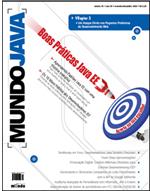I’ve finished reading Michael Lopp’s book “Managing Humans – Biting and humorous tales of a software engineering manager.”
The book is full of anecdotes describing the world of a software engineering manager. Despite the rather slangy style of writing (sometimes using bad language), the book encompasses several facets of management and is full of thoughts useful both for managers and for those who deal with managers (that is, all of us!).
It is divided into three parts: 1) The Management Quiver, 2) The Process is the Product and 3) Versions of You.
Next I transcribe some of my favorite quotes from the book along with my comments.
- “Managers who don’t have a plan to regularly talk to everyone on their team are deluded”. Everyone likes their opinions to be heard and considered. When managers don’t talk and listen carefully to what their employees have to say, besides disheartening the team, the company is bound to lose great talents and ideas.
- “The organization’s view of your manager is their view of you”. Therefore, it’s quite important for one to work out the relationship with their manager. Where does your manager want to get? What does he want to achieve? What is important for him? As an employee, you need to figure that all out and make sure that your manager is making progress, because if he succeeds you eventually will succeed. (Conversely, if a manager wants to be successful, he needs to consider these questions in regard to the members of his team.)
- The author talks a lot about meetings and the different kinds of people that take part in those meetings. In meetings, there are two major sorts of characters that need to be identified: players and pawns. The former is directly interested in the result of the meeting, while the latter typically gives no contribution. Knowing how to identify and deal with these roles is important in order to make the most of a meeting.
- In the last part of the book, the author described the several meeting creatures (another spectrum of sorts of people found in a meeting). Especially important is the synthesizer, which is the person who can gather all the sparse information thrown by people and turn it into clear-cut sentences understood by all. In my company, during the planning meetings of our sprints (we’re running Scrum), we usually refine the backlog along with all the team, scrutinizing each user story. In this process, several people make comments and we can spend quite some time discussing a single story. When the time to give the estimate comes, it’s extremely useful to have one person be the synthesizer, summing up what the story actually consists of.
- Information conduit – “for each piece of information you see, you must correctly determine who on your team needs that piece of information to do their job”. A manager selfish when it comes to information simply won’t be completely trusted by the team. Worse, as the author points out, “in the absence of information, people will create their own.” I also considered quite important the advice to give each piece of information we’re passing on a bit of our personal context. For example, how many times have you sent out an e-mail with a link to something interesting you read, but without adding anything to it, just the raw link? I’ve done it many times. Now I try to at least summarize what I am forwarding and preferably give some personal opinion.
Overall, I would say that the idea of using tales and humor to illustrate the ins and outs of management was a good one, but that could have been better explored. Nevertheless, the book has more illustrations and good advice for anyone interested in this topic (there’s also a humorous glossary of management at the end whose explanations are quite direct and helpful).


